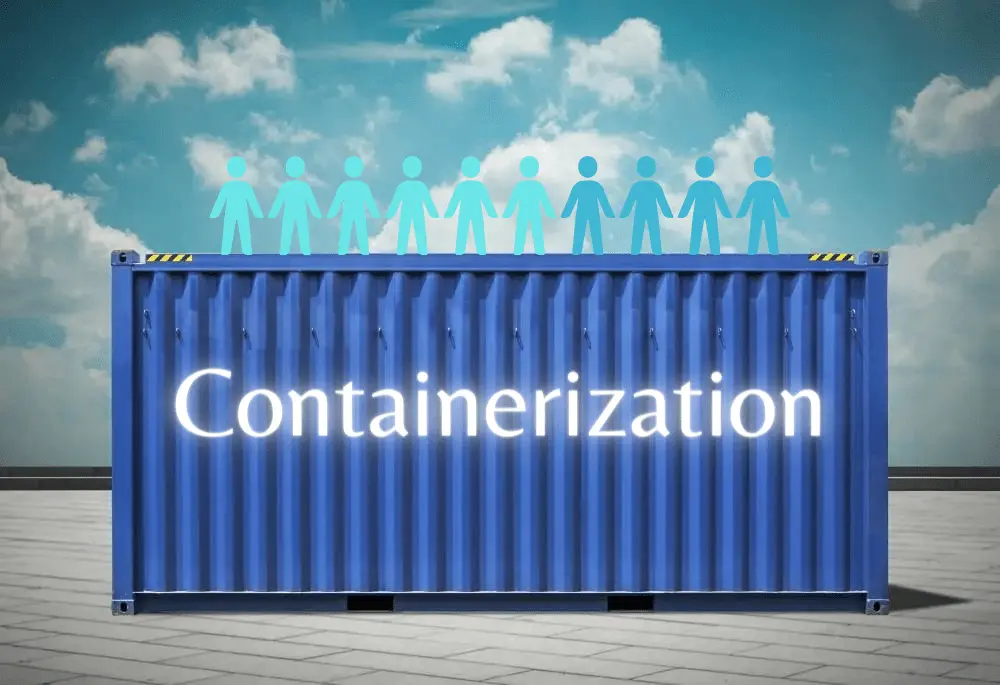Contents
- 1 Introduction to Containerization
- 2 What is Containerization?
- 3 Benefits of Containerization
- 4 How Containerization Works
- 5 Getting Started with Containerization
- 6 Best Practices for Containerization
- 7 Real-World Use Cases of Containerization
- 8 Challenges and Limitations of Containerization
- 9 Future Trends in Containerization
- 10 Conclusion
Introduction to Containerization
In this new era of the world where new technology increases day by day, In containerization the demand for efficient software deployment has never been greater. Our old methods of deploying applications on any kind of dedicated servers or virtual machines can be time-consuming and resource intensive and also cumbersome. This is where containerization comes to resolve the problems. Containerization is a type of cutting edge infrastructure technology. Which is to transform a way to develop software, ship, and deployed.
What is Containerization?
Definition
On the deep core of its, containerization is a very lightweight and standalone package that includes all kinds of data or resources to run a part of the software, including the code, runtime, libraries, and system tools. This one is a virtualization type of method that allows multiple type of applications to run on the same host, isolated from one another, using the same OS kernel. A well-known containerization tool, Docker, has become widely used in the software development industry.
Key Concepts
We know that Docker is the most well-known containerization tool but also by this there are other essential components that play a crucial role in the containerization ecosystem. And that’s how everyone is: An orchestration platform like Kubernetes, for instance, automates the deployment, scaling, and management of containerized applications. These tools work hand in hand to create a unique containerization infrastructure.
Benefits of Containerization
Scalability
Containerization offers a different type of unparalleled scalability which is very unique and fabulous. As we know that containers are lightweight and have some footprints, they can increase and decrease or up and down rapidly and also allow applications to scale effortlessly based on demand. This scalability is particularly beneficial for modern cloud based applications, where traffic can fluctuate significantly.
Portability
Here the containers encapsulate the entire application and its dependencies and try to make them highly portable for better results. When the developers build an application within a container on their local machine and after that, the developers deploy it to any environment with the confidence that it will run consistently across different platforms, We can use it in the developer’s laptop, a testing server, or a production environment.
Resource Efficiency
Containerization maximizes resource efficiency by sharing the host OS kernel. Unlike virtual machines, which require separate OS instances for each application, containers run as isolated processes within the host OS, reducing overhead and resource consumption significantly.
Isolation and Security
These types of containers provide a high level of isolation and after that, they ensure that applications remain independent means work on themselves of one another. If one container crashes then no chance it won’t affect other containers on the same host. Moreover, containerization enhances security by isolating applications from the underlying infrastructure technology and also these will be minimizing the risk of potential security breaches.
How Containerization Works
Containers vs. Virtual Machines
When Containerization and Virtualization two main terms share similarities and also they operate differently. On the other side, we can say that virtual machines (VMs) use hypervisors to create multiple virtualized environments on the different each with its own OS. In other terms, containers use the host OS kernel and eliminate the need for a separate OS. This OS is used for each container. This difference contributes to the containers’ lightweight and agile nature.
Container Images and Registries
Container images are used or serve as blueprints for containers. They are very consist for the application’s code, runtime, libraries, and other dependencies required to run the different types of applications. Docker Hub and other container registries host pre-built container images that developers can pull and use to streamline their development process.
Container Orchestration
Container orchestration platforms like Kubernetes manage the deployment, scaling, and monitoring of containerized applications. They create different types of tasks and these all are like such as load balancing, service discovery, and self-healing, ensuring the seamless operation of applications at scale.
Getting Started with Containerization
Choosing the Right Container Platform
We have to Select the right type of container platform depending on the specific needs of our projects. Docker is an excellent choice for beginners. Docker given its ease of use and extensive community support. On the other hand, Kubernetes is better suited for managing other large-scale container deployments.
Installing and Running Containers
I hope that you also feel that setting up containers is a straightforward process. Once you have the container platform installed, then Baba re you can use this tool in the command line and also in the graphical interfaces to manage containers and their configurations. Docker’s command-line interface has some examples like allows developers to create, run, and manage containers with simple commands.
Building Custom Containers
On the other hand, when we are using pre-built images from registries and all professional developers can create custom containers tailored to their application’s different type of requirements. When we define the Dockerfile the developers can specify the necessary dependencies or configurations and also some important settings to create a container image from scratch.
Best Practices for Containerization
Managing Container Lifecycle
For the best practice properly managing the lifecycle of containers is enough to check the optimal performance and resource utilization for the better result. Containers should be regularly updated to the latest versions to benefit from bug fixes and security patches.
Security Considerations
While containerization enhances security by isolation, it’s crucial to implement additional security measures to protect containerized applications. This includes using strong authentication mechanisms, applying the principle of least privilege, and regularly scanning container images for vulnerabilities.
Optimizing Performance
To maximize the performance means to increase the power and performance of containerized applications the different types of professional developers should fine-tune resource allocations or set appropriate limits and also monitor the high or low performance metrics for the real result. Monitoring tools and log analysis assist us for identify the problems and by this we can resolve all kinds of problems and also resolve performance bottlenecks.
Real-World Use Cases of Containerization
DevOps and Continuous Integration/Continuous Deployment (CI/CD)
Containerization plays a unique and very important role in the DevOps culture. Containerization enables developers and operations teams to collaborate equally back to back. In the CI/CD pipelines leverage containers are used to automate the application testing or deployment and also for delivery ensuring rapid and reliable releases.
Microservices Architecture
Containerization aligns perfectly with microservices architecture, where applications are cut down into small types of independent services. Containers allow each microservice to run in isolation, facilitating easier development, deployment, and scalability.
Cloud-Native Applications
In cloud-native development, containerization is a foundational technology. By encapsulating applications in containers, developers can take full advantage of cloud resources and create resilient, highly available applications.
Challenges and Limitations of Containerization
Networking and Communication Complexity
Container networking can become very difficult but this is especially in large-scale deployments. Checking seamless communication between containers, managing IP addresses, and handling service discovery can be very hard and challenging.
Persistent Data Management
All containers are designed to be stateless and simple, which faces challenges when dealing with applications and then requires persistent data storage. Developers need to implement strategies and some unique ideas for data management and backups carefully.
Monitoring and Troubleshooting
Monitoring and troubleshooting containerized applications are demands for the special tool and knowledge. Understanding the container logs, performance metrics, and runtime behavior is important to maintain a healthy container ecosystem.
Future Trends in Containerization
Serverless Containers
The convergence of serverless computing and containerization is an exciting new world of era future trends. Serverless containers offer automatic scaling and zero infrastructure management making them highly efficient and cost-effective for specific workloads.
Edge Computing and IoT
As we know that the Internet of Things (IoT) continuously increases so here containerizations will play a main role in edge computing. Containers allow applications to run efficiently on edge devices, reducing latency and also ensuring that this is real-time processing.
Cross-Cloud Compatibility
The future of containerization lies in enhancing cross-cloud compatibility. Organizations will look to deploy containers seamlessly across multiple cloud providers, ensuring flexibility, and reducing vendor lock-in.
Conclusion
Containerization has developed day by day. And this will be deploying, and managing software applications. Its main ability is to provide scalability, portability, and a high amount of resource efficiency for solving all problems of modern software deployment. As organizations continue to capture and hold containerization and its associated technologies, we can expect or predict that the future of software development is osmm and amazing.
Frequently Asked Question’s
Q.1: Is containerization the same as virtualization?
A: While they share similarities, containerization and virtualization operate differently. Virtualization uses hypervisors to create multiple virtualized environments and this all are with its own OS. Containerization, on the other hand, uses the host OS kernel, making it more lightweight and agile.
Q.2: What are some popular containerization tools?
A: Docker is one of the most well-known containerization tools, widely adopted by the software development community. Kubernetes is another crucial component that complements Docker by providing container orchestration capabilities.
Q.3: How does containerization enhance security?
A: Containerization enhances security by isolating applications from the underlying infrastructure. Each container runs in isolation, so if one container is compromised, it won’t affect others on the same host.
Q.4: What are the challenges of container networking?
A: Container networking can be very hard and complex, especially in large-scale of deployment. To check and for ensure seamless communication between containers, managing IP addresses, and handling service discovery can be challenging tasks.
Q.5: What is the future of containerization?
A: The future of containerization looks promising and brighter because serverless containers or edge computing and also cross-cloud compatibility are some of the trends that will shape the future of container technology.

